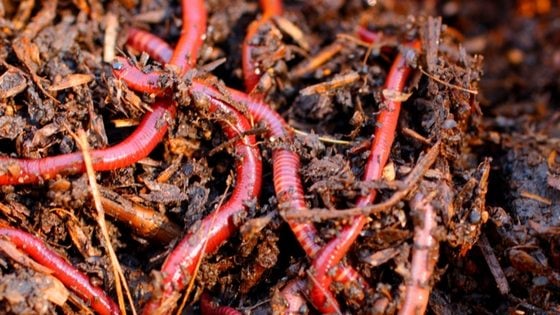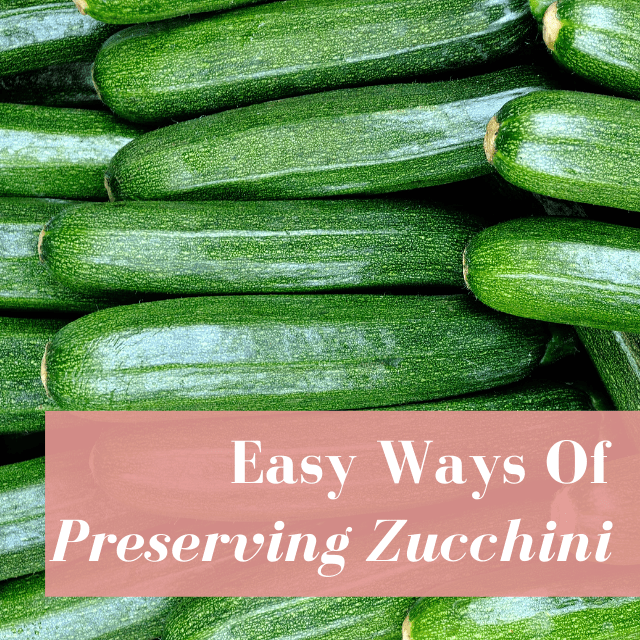The term “lasagna gardening” conjures up images of cheesy, gooey, hamburger-laden goodness. Unfortunately, it’s not possible to grow a lasagna in your garden – and lasagna gardening has nothing to do with the Italian dish we know and love.
However, lasagna gardening has plenty of other benefits to offer. Not only can it help boost the fertility of your soil, but it can also render a formerly unusable plot of land totally usable.
Here’s everything you need to know about lasagna gardening.
Table of Contents (Quickly Jump To Information)
What is Lasagna Gardening?
Lasagna gardening, as we mentioned, has nothing to do with cooking and everything to do with great gardening. It’s all about layers – you can place lasagna gardens wherever you want.
A no-till, no-dig method of organic gardening, lasagna gardening results in fluffy, nutrient-dense soil that requires very little work on your part. It refers to a method of building up your garden via layers, producing rich soil that will help your garden thrive. It’s often referred to synonymously as sheet composting, and it’s not only great for your garden, but it’s good for the environment, too.
As long as there is sun and a relatively flat grade, you can build a lasagna garden. It can be large or small, narrow or wide, long or short. You don’t even have to till anything! All you will need to do is build layers until it’s the perfect height for your needs.
To make it an even better proposition, you can use any kind of organic fertilizer, too. You should never use a synthetic fertilizer in a lasagna garden, but it’s fine to use compost, leaves, manure, or any other natural ingredients to help build your soil.
Why You Should Try Lasagna Gardening
There are plenty of reasons to give lasagna gardening a try. As you probably know, we love finding solutions for busy people. Not only is it more convenient for people who have poor soil, but it also is a great solution for the lazy gardener.
Many of us live in areas where the soil is too rocky, too sandy, too clay bound, or inappropriate in some other way for gardening. Lasagna gardening gets rid of that dilemma. You can place your garden wherever you have sun and you can use manure, compost, and other fertilizers to build it.
While these amendments won’t go into your soil right away, they will accumulate and leach into the ground over time, gradually improving the quality of your soil so that you can one day use it for gardening in a more traditional sense.
You won’t have to dig, cultivate, or till in any way, either. Since you are essentially adding new “soil” on top of the ground, you won’t have to turn anything in to provide the benefits of fertilizing, aerating, and eliminating weeds. This helps to protect the fragile microbes that live in your soil – again, improving the structure and nutrition of your soil over time.
Once you get it established, a lasagna garden is much easier to maintain, too. You can build it to any height, so if you have accessibility issues, you will have a much less difficult time tending to your plants. You will also have fewer weeds to contend with and you won’t need to water it as much, either. Compost holds water much better than the regular garden soil.
Finally, a lasagna garden is a great method for people seeking inexpensive organic gardening techniques. It takes just a few hours to prepare the garden and although it can take a full season for the organic matter to break down enough to fully support the plants, you can start growing almost immediately. Plus, a lasagna garden can be built entirely free of cost if you use your own organic waste.
How to Build a Quick Lasagna Garden
Building a lasagna garden is easy and entirely customizable to your preferences and growing needs. You can build the garden directly on the ground, by piling up layers, or you can build it in a raised bed.
The basic principles, however, remain the same. Make sure you have an idea of which layers you are going to include in your garden since the first layer will be on the bottom and the last layer will be on top – the contents of the layers can vary depending on which plants you choose to grow.
First, begin by selecting your growing area. Choose one that receives at least four hours of sun a day, unless you plan on growing a shade garden with tolerant plants like kale and spinach.
Next, if you plan on building sides or a raised bed around your lasagna garden, mark the area with stakes. This will give you an idea of the boundaries of your lasagna garden so you don’t have a heaping, sprawling mess.
If you decide to enclose your garden in any way, stick with wood like pine, oak, or maple. Don’t use anything that has been treated, as these chemicals can leach into your garden over time.
Put down your first layer. This should be either a thick (six to eight layers) layer of newspaper or a single sheet of cardboard. This will provide a strong base for your lasagna garden and it will also help suppress weeds. Another option is straw. Whichever option you choose, make sure it’s at least six inches thick. Wet the layer before moving onto the next step.
Add some compost or manure. Compost is best, particularly aged compost, as it will allow the plants to use the nutrients more easily. Water this layer, too. Then put down a layer of straw, which will provide additional aeration, and then wet that, too.
Next, add a layer of “new” compost ingredients. Some options to choose from include coffee grounds, vegetable scraps, eggshells, or other kitchen waste. This will begin to break down slowly in your garden, adding additional nutrients to the soil once the compost has been depleted. Again, cover with straw, and wet it.
Add a brown layer of ingredients to your lasagna garden. Anything that contains lots of carbon can be used here – think shredded paper, napkins, toilet paper tubes, straw, or wood shavings. Add another layer of straw, and water. Then, you’ll add a green layer- anything that is nitrogen base will do. You can add more vegetable or fruit scraps (such as banana peels) or coffee grounds or even some lawn clippings. Sprinkle with water once more.
You’ll repeat this pattern as needed until your garden is at least two feet deep. You can create an even deeper garden if you want it to be taller for easier access – just remember that the garden will break down over time, so it will never be as tall as it was when you started. The last layer of your lasagna garden should always be compost or aged manure.
That’s all there is to it! The final step is to plant your seeds or seedlings just as you ordinarily would. You will care for them in the exact same ways you would when planting in a regular in-ground garden or raised bed – just with a lot less time and effort involved.
Things to Keep in Mind
Although a lasagna garden is much easier to care for than a regular garden, there are some things to keep in mind. For instance, you may still have problems with pests. These can be magnified if you use young compost. Some pests, like mice and rats, are going to be attracted to the fresher compost ingredients. Try sprinkling some cayenne pepper around them (or building your lasagna garden in an enclosed area) to deter these rodents.
You may also have fungal diseases. Cinnamon can help prevent fungal disease, but often, fungal issues can be magnified in a too-wet lasagna garden. Hold off on watering until you’re sure your garden needs it – a lasagna garden will hold water a lot better than a traditional garden, so it’s not difficult to overwater.
Finally, any ingredients you use in your lasagna garden should be carefully examined for any signs of contamination. For instance, you will want to look over your cardboard for tape, glue, and staples. These can leach chemicals into your soil and they won’t break down in a garden (or they will take a very long time to do so). You should also avoid using hay instead of straw – not only will it take longer to break down, but it will contain tons of weed seeds, too.
When to Build a Lasagna Garden
You can build your own lasagna garden at any time of the year. Fall tends to be best, as it will provide you with a multitude of organic materials for free – think of all the fallen leaves and yard waste hanging around. Plus, you can allow the lasagna garden to break down all winter. By spring, it will be time to plant.
However, if you’re reading this in the spring, summer, or winter, don’t think it’s too late to start your lasagna garden now! It can be tough to start a lasagna garden in the winter, but if you’re willing to wait until early spring, you’ll have the perfect environment to get going. Just remember than in spring and summer, you will want to add more soil-like amendments to the final layer of the bed, like topsoil, so you can plant immediately.
Over time, the organic matter in your garden will shrink and break down. You will want to replenish it every year by adding additional green and brown layers. Otherwise, there’s little else that you need to do except sit back and watch your garden grow.
Oh – and you can also make some real lasagna with all the delicious tomatoes and peppers you’ll be able to grow in your lasagna garden!
Maat van Uitert is a backyard chicken and sustainable living expert. She is also the author of Chickens: Naturally Raising A Sustainable Flock, which was a best seller in it’s Amazon category. Maat has been featured on NBC, CBS, AOL Finance, Community Chickens, the Huffington Post, Chickens magazine, Backyard Poultry, and Countryside Magazine. She lives on her farm in Southeast Missouri with her husband, two children, and about a million chickens and ducks. You can follow Maat on Facebook here and Instagram here.






![You CAN Raise Meat Chickens (And Actually Go Through With It!) [Podcast]](https://thefrugalchicken.com/wp-content/uploads/2016/01/raise-meat-chickens-feature-min.jpg)